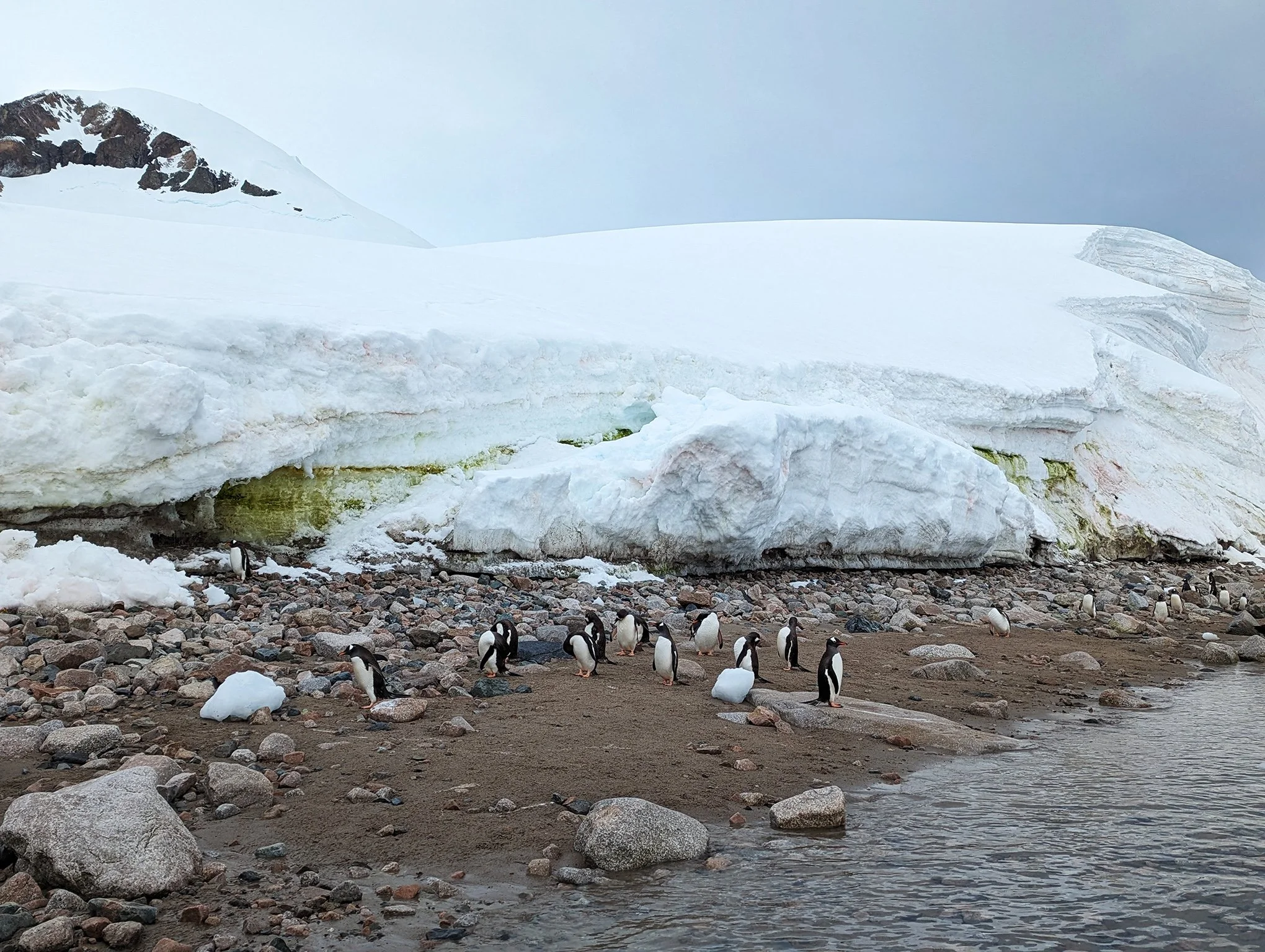In the morning of Day 7 we landed on Useful Island - a hilly chunk of rock with penguin rookeries and nice views over the bay
A view of the harbor from the top of the island.
Here, we saw our first examples of penguin highways, and got to observe them in use as penguins made their way from their nests down to the water and back.
After a chilly landing it was always nice to retreat to our warm stateroom and try our luck at whale spotting.
The real treat of the day came in the second part, when we got to do our first continental landing in Neko Harbor. Our prior two landings were on islands, thousands of which dot the peninsula, but this time we got to set foot on the actual 7th continent itself.
Approaching the landing site in our zodiac, it was amazing to see both our man-made paths on the right and penguin highways on the left zig-zagging up the hill.
In Neko Harbor, we walked off our zodiac onto a sandy beach, and I almost felt like I was storming Normandy, although the locals were a lot more chill.
The locals.
The green and pink colors in the snow is algae.
Climbing up to the top in knee-deep snow - oh, the things we do for panoramic photos.
The view from the top of this hill was incredible, especially this massive glacier sliding into the harbor, that revealed glimpses of gemstone blue through its cracks and layers.
Skuas - large, predatory birds that feed on penguins are never far from a rookery.
Neko Harbor afforded some really incredible photo opportunities of quintessentially Antarctic scenes..
So much snow! (seen here being touched in direct violation of expedition orders). It's natural to expect that Antarctica would be snowy, but in reality, none of that snow is supposed to be there. Ice - yes, lots of ice, but not snow. Antarctica is a desert, and one of the driest places on earth. It normally gets almost zero precipitation year round. With climate change, all of that has been upended, and now it snows regularly. The snow never melts in many cases, resulting in absolutely gargantuan amounts of it covering everything. This is destructive to the ecosystems and wildlife, which now face greater obstacles in moving, nesting, or finding food.
And yes, we're aware of the sad irony of talking about climate change while actively contributing to it via tourism. It is indeed a thorny subject, and one we talked about at length with our expedition guides, all of whom are ardent conservationists and scientists. Since we are now in the "damned if you do, damned if you don't" era of the climate crisis, the general consensus is that taking people to fragile places like Antarctica (responsibly) is better than not taking them at all, because everyone who visits here comes away forever changed by its beauty, and compelled to protect it.
The World Voyager in perspective
A close up of a penguin highway
It's fun to watch these little busybodies scurrying around back and forth like office-bound pencil-pushers who are running late for work.

Neko Harbor Highlights
Get up close and personal with the natives, see penguin highways in action, and take in some breathtaking glacier and harbor views


















































